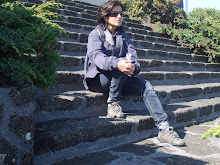A month after I’d moved to London I was stopped on the high street by a TV reporter for a vox pop.
“Have you ever faced any harassment in public spaces in London?” he queried, as a wooly microphone descended from on high.
“Nope. Can’t say I have.” I replied.
“Well, I guess you’ve been lucky so far,” he added.
I moved on but pondered his question. Why had he asked me that? Was it not safe for women? What happened here after dark? What kind of harassment was it? How serious?
A few months later, I can answer some of those questions and oh how different my reply to that reporter would’ve been. The thing that’s happened between now and then is that I’ve been to Southall. A lot.
Southall, if you’re familiar with London is the big Indian Punjabi neighbourhood. Get off the train there in the morning and the smell of frying onions will come wafting gently by. The Southall Broadway is lined full with shops selling glittery Indian clothes, pressure cookers, Bollywood CDs, kadhais, cheap plastic toys and all other essential items.Theres not much pavement space left after the make shift masala corn seller, the Kashmiri chai guy and the jalebi man set up stall. Women in sarees wearing monkey caps, shaped more like whipped cream toppings than head gear, hand out leaflets advertising palmistry or astrology.
In the last two decades, since the civil war in Somalia in 1991, a lot of Somalis have also settled in this neighbourhood. Today, tall burkha clad black women and Somali men are an equally common sight on the main street as are Sikh men in turbans and women in salwar kameez.
Southall is a gritty, working class neighbourhood – a bubble at the western end of London with the unfortunate feel of a ghetto about it. Theres not much by way of tourist attractions here and even if you love Indian food, there are plenty of great options elsewhere in London. So it remains a little secluded outpost that if suddenly transferred wholesale to Amritsar, would look and feel much the same, so alienated does it appear from posh central London 10 kilometres to the right.
Into this rich mix, throw in the disgruntled, sexist, chauvinistic, angry young man and you’ll see what I mean about the harassment on the street. Young women can’t walk around in Southall without inviting attention that could range from long, hard, shameless staring to lewd comments and nasty abuses.
Its happened to me so often that now I grit my teeth while I prepare to pass a group of men on the street, shocked and relieved if they say nothing. But when they do and I’ve confronted men who have, they become so abusive that it makes me think I’ve tapped into a well-spring of anger against everything that comes rushing up at the slightest sniff of a challenge.
Given this personal history, I was particularly amused while chatting with the British Asian man who came home to fix our boiler.
“Do you live around here?”, I asked.
“Southall,” he replied. “Do you know it?”
“Yeah.. I shop there,” I said.
“Good for Indian spices and stuff in'nit?” Then suddenly becoming a little defensive he added, “It used to be a really nice neighbourhood but things have become really bad since the Somalis started coming.”
I groaned invisibly. This man had clearly forgotten that plenty of people have blamed him and his parents for all of Britain’s problems, yet there he was doing it all over again to someone else. I wanted to tell him that the very many times I have been stared at, harassed and abused in Southall, its never been by a Somali man, but always South Asian men.
Yet its never us. Always them.
Thursday, January 28, 2010
Wednesday, January 06, 2010
Because I Thought of Chicago....
Subscribe to:
Comments (Atom)





